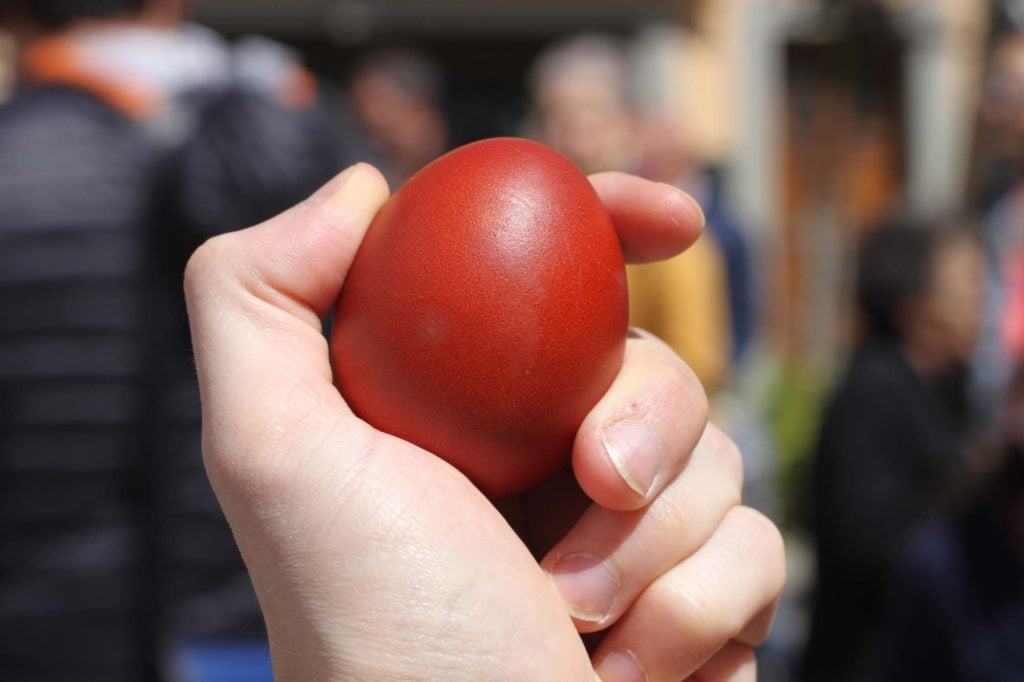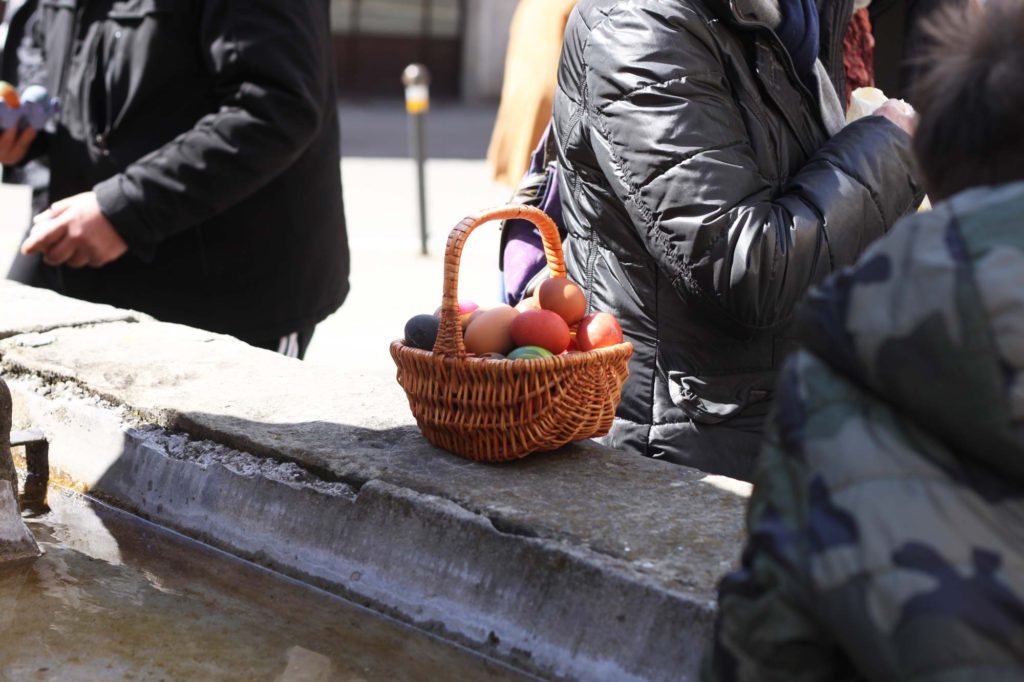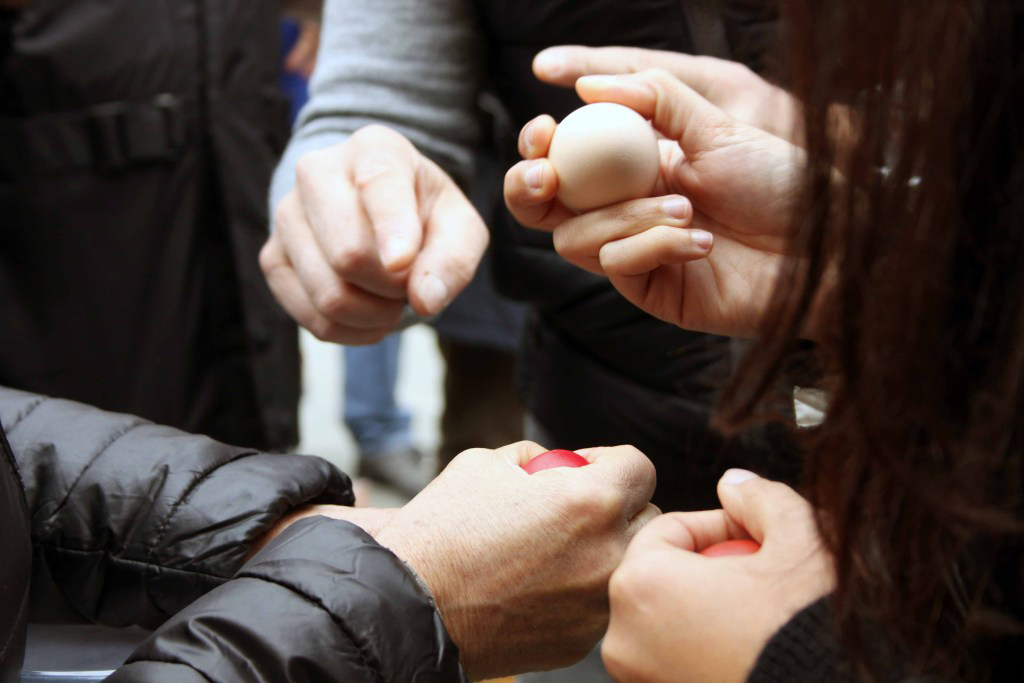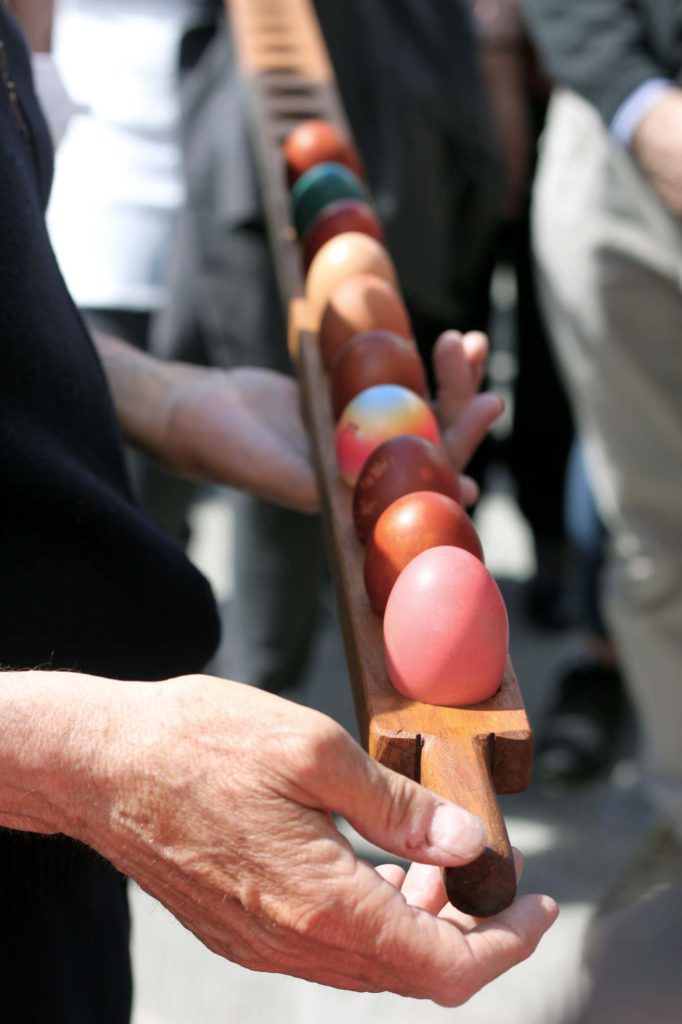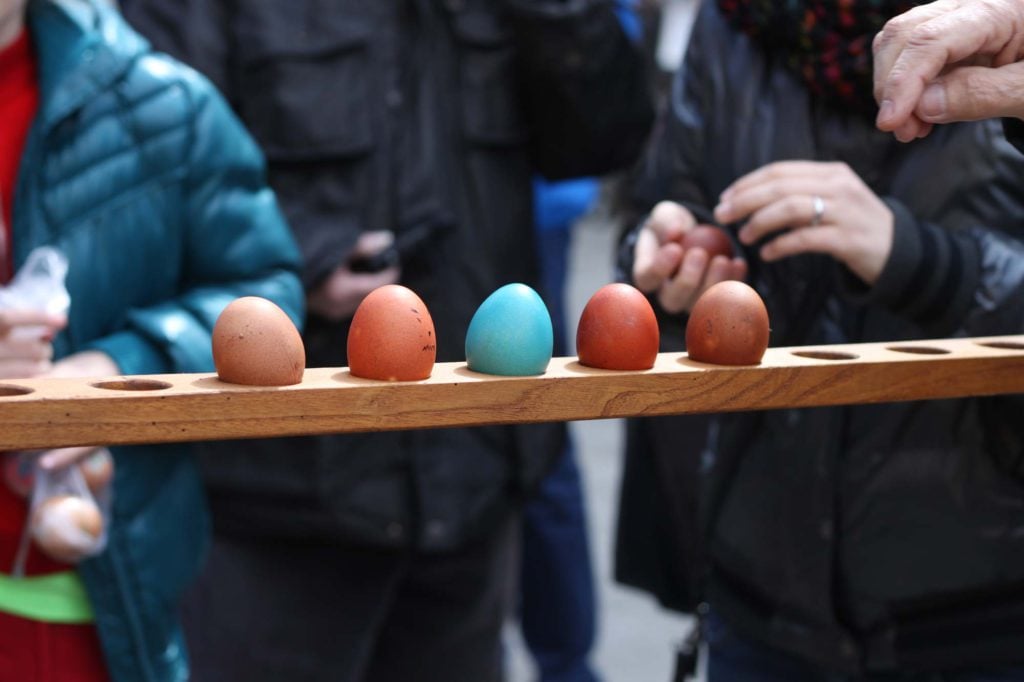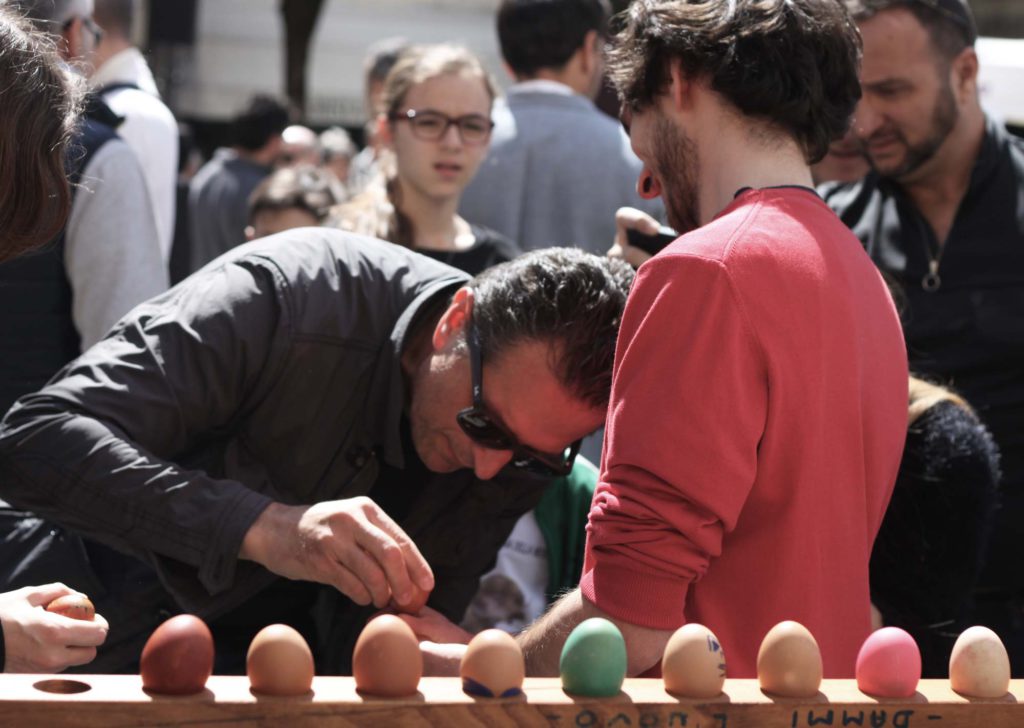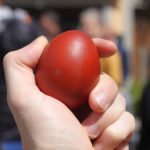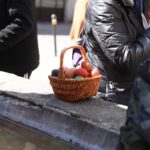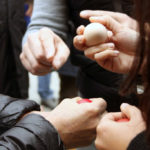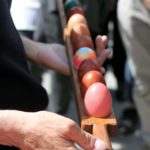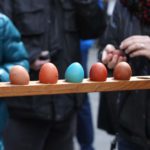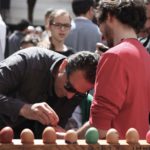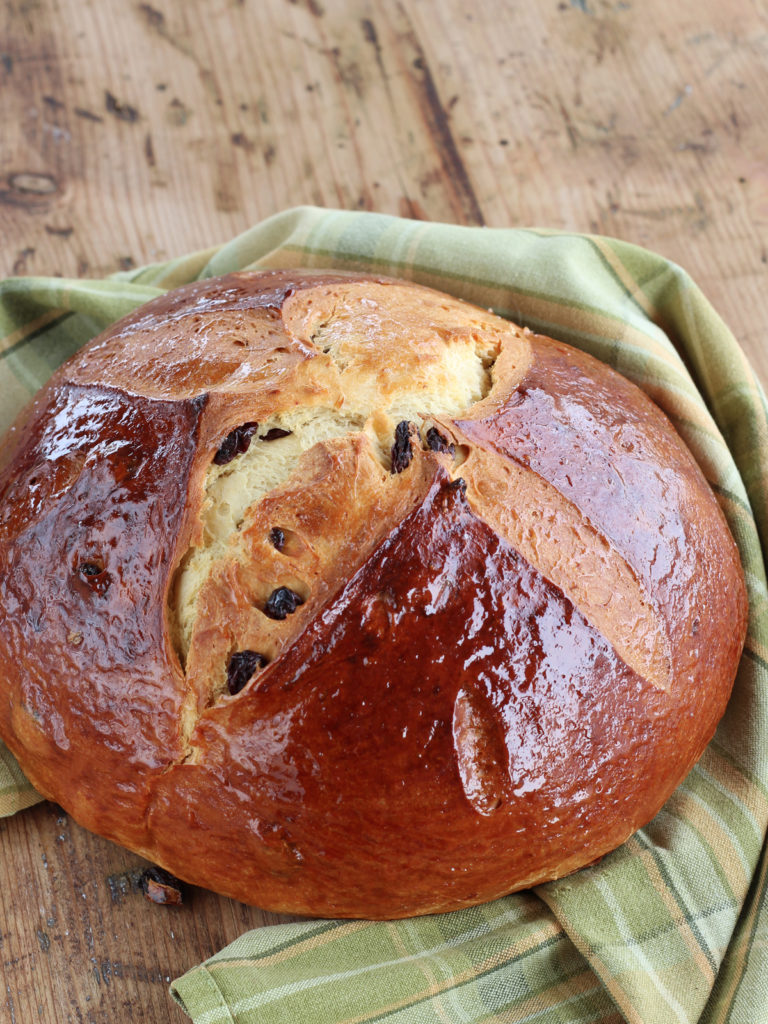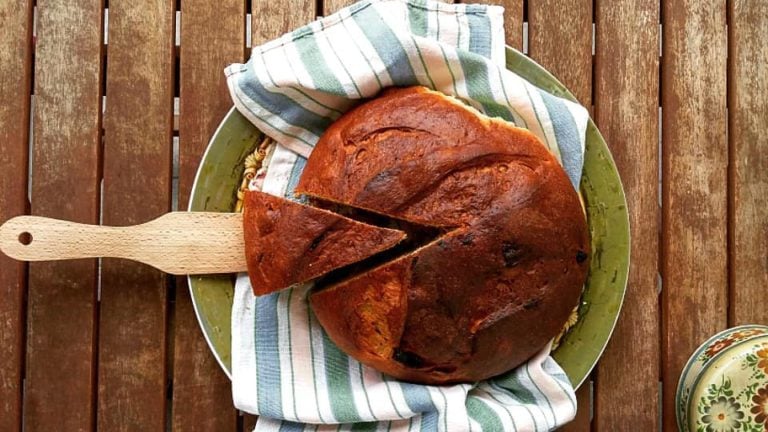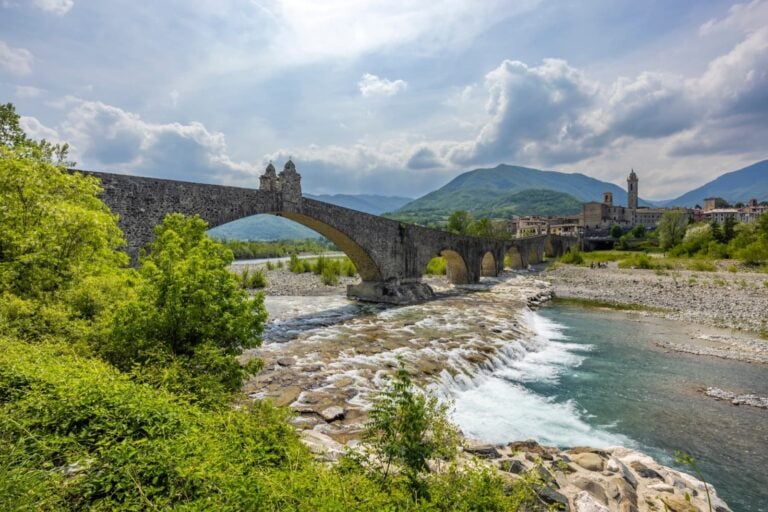If you happen to be in Fanano on Easter Monday and you hear people shouting ‘Fila di Culi’ (line of bottoms), ‘Fila Di Punte’ (line of toes) and ‘Fila di Pance’ (line of tummies), don’t take it badly. You are in the middle of a battle with hard-boiled eggs, known as ‘Coccetto’, the traditional game of Fanano.
Where does it come from? It’s one of those things that a grandfather tells his grandson, then the grandson becomes a grandfather himself and tells his grandson, and so on. For hundreds of years.
And just like in Fanano, which here on Mount Cimone is the capital of Coccetto, the tradition of egg battles is also very popular in other municipalities of our Apennines: even with different names, but always linked to the terminology of “cocciare” (to clash).
Fanano (MO), coccetto – uovo colorato, ph. Eugenio Soliani, Archivio Hotel Tirolo
Fanano (MO), coccetto – cestino uova, ph. Eugenio Soliani, Archivio Hotel Tirolo
Fanano (MO), coccetto, ph. Eugenio Soliani, Archivio Hotel Tirolo
Fanano (MO), coccetto, ph. Eugenio Soliani, Archivio Hotel Tirolo
Fanano (MO), coccetto – uova in fila, ph. Eugenio Soliani, Archivio Hotel Tirolo
Fanano (MO), coccetto, ph. Eugenio Soliani, Archivio Hotel Tirolo
Before the battle, there is a long preparation period. On Easter Saturday or Sunday, families prepare hard-boiled eggs and decorate them, mainly using natural dyes to give the Coccetto that extra touch of colour. For example, to turn the eggs a beautiful ruby red colour, we simply boil them in water with onion skins.
I have many memories from my childhood.
As the son of a woman from Fanano who moved to Modena when I was a child, I did not know all my peers at the age of 6-7, obviously, as I did not attend primary school in Fanano. The Coccetto was therefore a way to meet others, get to know them, study them, perhaps arrange to meet in the afternoon for a football match and start lasting friendships.
The game traditionally takes place in Piazza Corsini, Fanano.
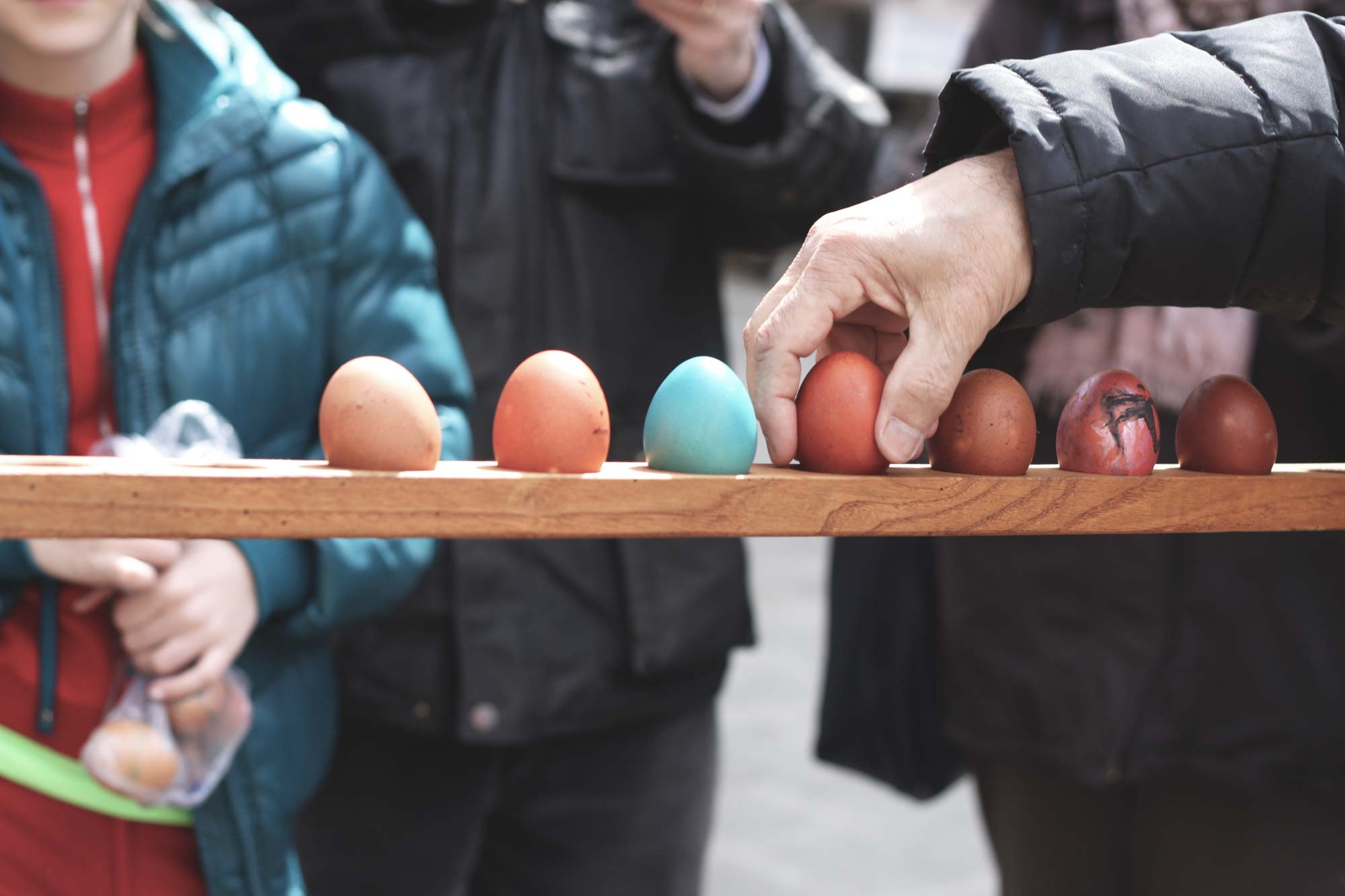
There are two methods of challenge: either head to head or in a row.
Head to head
The game begins with a clash between the “ tips”, i.e. the thinnest parts of the egg. The winner takes home the egg, or can continue the challenge between the “ bottoms”, the thickest ends of the egg, or with the “ belly”, i.e. the parts of the egg between the two ends.
Row
The row is a long wooden board with symmetrical holes for the eggs. At both ends, two volunteers hold the row in full view of all the players.
The participants place the eggs in the row with the points facing upwards, and the Grand Master of Coccetto, Riccardo Pellati, with his friend Maurizio Foli, begin to entertain the crowd by drawing lots to decide who will be the first challenger of the “row of eggs”.
The numbers are drawn and the challengers count to decide who will be the first to play. From there, the selected Coccettante will challenge the first egg in the row to a “tip against tip” and if he wins, he will take the egg home. Then, after his turn, it will be the turn of his neighbour in a clockwise direction and so on. Once the “tips” round is over, the “bottoms” and “bellies” round begins.
Us children of the 80s and teenagers of the 90s would stand to one side of the square, partly because playing against “the older ones” filled us with a kind of reverential awe, perhaps even a little fear.
Yet, with a few friends your own age you could even cheat and not give them a lost egg, but one you had patiently worked on, perhaps leaving them another less “precious” one. And vice versa.
If we tried to do that with an adult, we would have been given a good telling-off, because when it comes to competition, we all become children again, even if we are 60 years old!
The Coccetto is such an institution that in 2015, an American journalist from New York, food blogger around the world and contributor to the New York Times, Francine Segan, came here to Fanano and it was me, the half-Fananese child, who acted as her guide: she was dazzled and even managed to win a couple of eggs.
Thanks to her, Fanano had its moment of fame in one of the most important newspapers in the world.
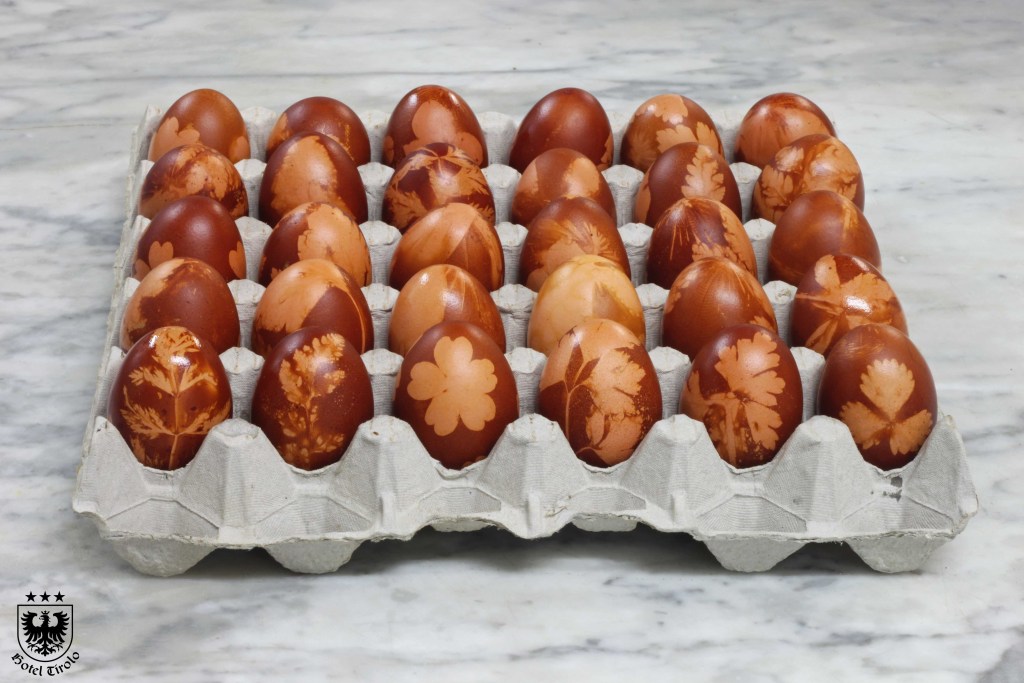
Author

Maria Grazia Masotti
An eternal dreamer, but I try to stay grounded. I was raised in the countryside but I love big cities. I’m always ready for a trip, as long as it’s sustainable.
You may also like
Easter in Emilia-Romagna. Tours and events between cities & nature
by Maria Grazia Masotti /// April 11, 2025

Interested in our newsletter?
Every first of the month, an email (in Italian) with selected contents and upcoming events.
